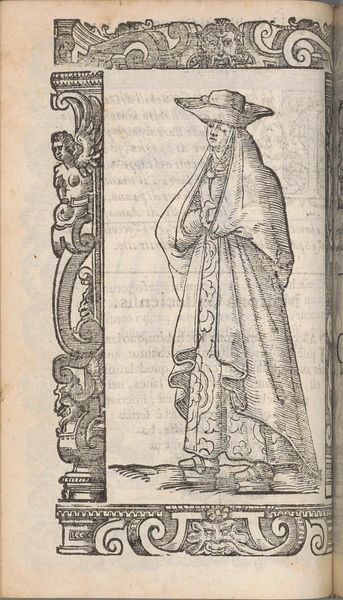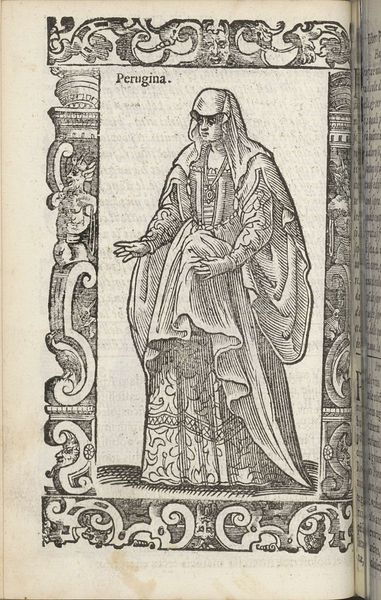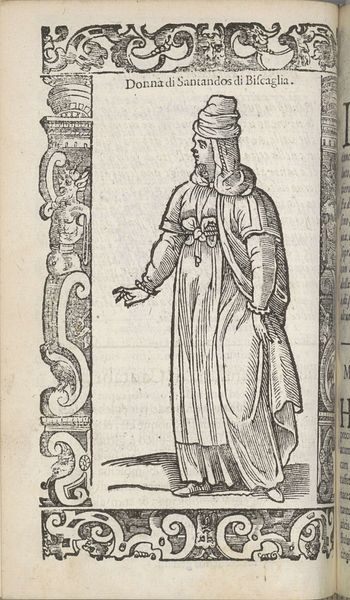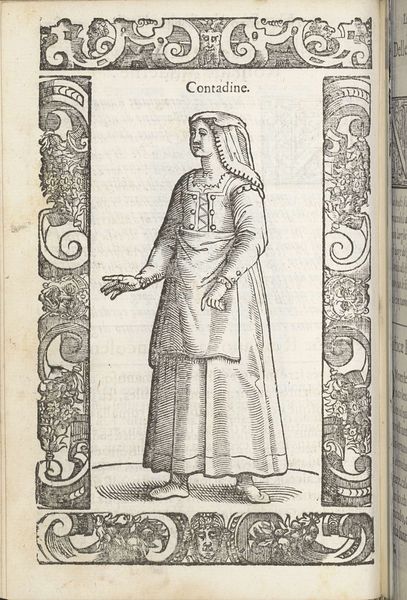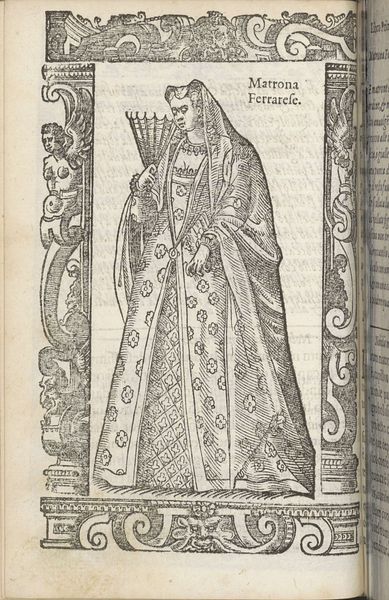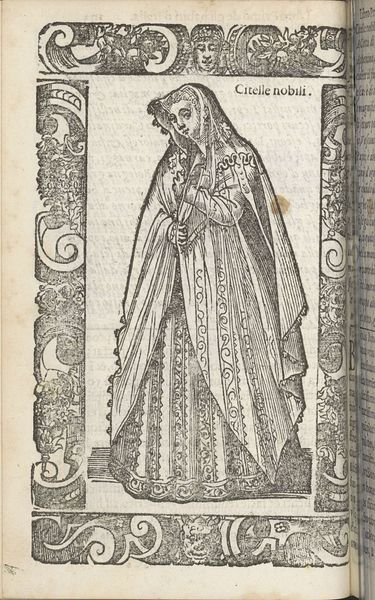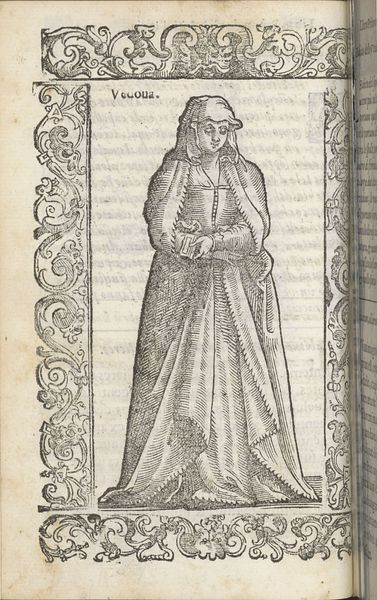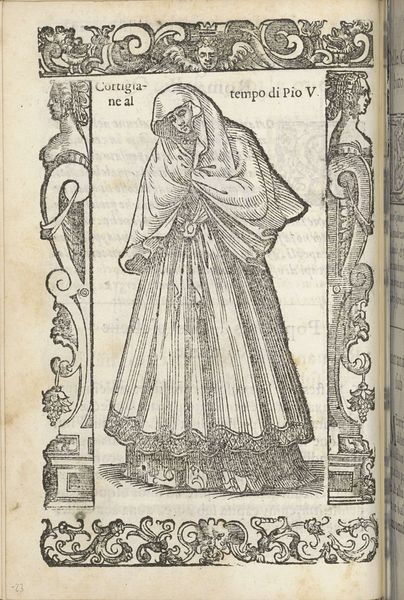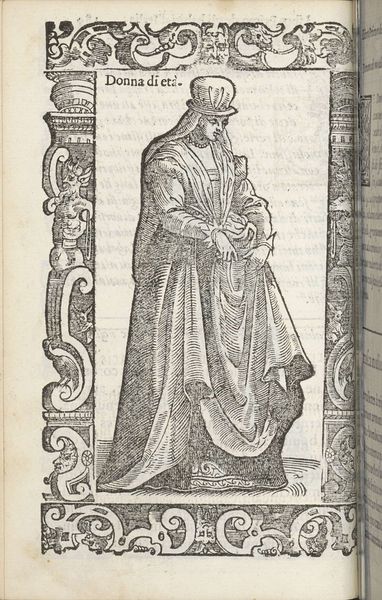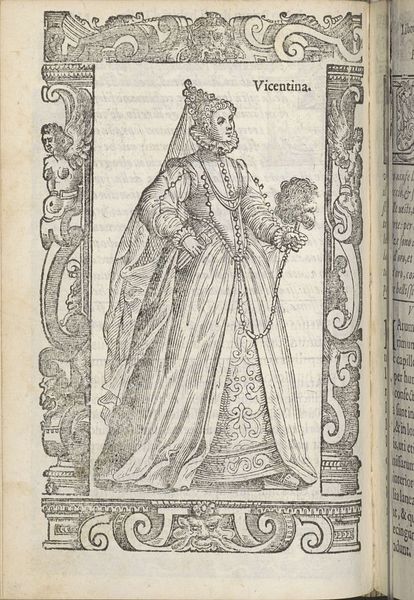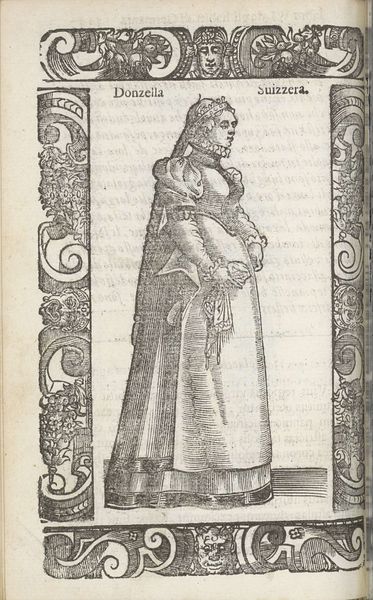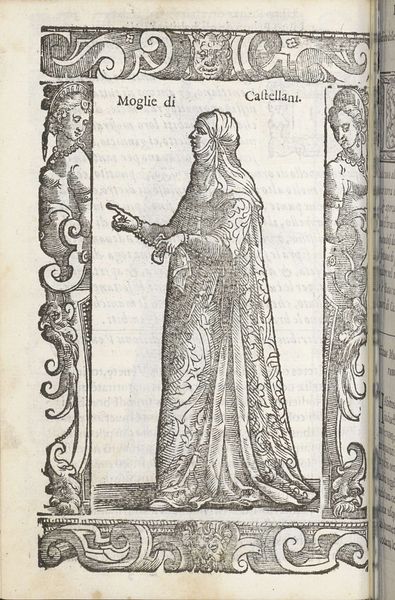
drawing, paper, ink, pen
#
portrait
#
drawing
#
aged paper
#
pen sketch
#
old engraving style
#
sketch book
#
classical-realism
#
figuration
#
paper
#
11_renaissance
#
personal sketchbook
#
ink
#
sketchwork
#
pen-ink sketch
#
line
#
pen work
#
sketchbook drawing
#
pen
#
history-painting
#
academic-art
#
italian-renaissance
#
sketchbook art
Dimensions: height 167 mm, width 125 mm
Copyright: Rijks Museum: Open Domain
Curator: The precise linework here is truly striking. We're looking at "Nobile ornata", a drawing by Christoph Krieger from 1598, executed with pen and ink on paper. The condition of the paper lends a certain aged aura to the overall piece, and what jumps out most for you? Editor: The detail! But first impression? Regal, but almost like a sketch captured between royal duties. There's a contrast between the figure's composed posture and the apparent immediacy of the pen work that makes me want to inspect closer the labor and artistic intention behind such detailed artwork on seemingly delicate paper from that era. Curator: Absolutely, that tension is palpable. I’m immediately drawn to the level of ornate decoration—it’s fascinating to consider the socio-political meaning behind this portrait of a noblewoman and the status these elaborate garments project, particularly given the rising fashion trends within court society. We need to examine the networks of artisans and craftspeople required to bring such fashions and portraiture to life. Editor: And look at how the dress is ornamented with these stars and quatrefoils! What of this kind of early celebrity endorsement from a visual production and consumption standpoint? To be captured like this must have required specific modes of patronage, not simply existing workshops, what about the status of paper and ink at the time, considering access to production, the cost, and who commissioned the piece and controlled the narrative, not just for themselves, but for larger socio-cultural structures in the artistic community during Krieger’s artistic activity in Nuremberg? Curator: Indeed. Consider how this image functions. The very act of memorializing the noblewoman within a personal sketchbook provides insight on how such a drawing, likely part of larger artistic networks, might then translate into prints that would later reach a much wider, often international audience via workshops that depended on commissions. The artwork gives access to how gendered and social values shaped the world she navigated. Editor: And even that border seems crucial - the decorative frame almost merges into the printed page beside, pointing toward where this existed within the book’s means of production. As a means for understanding Renaissance portraiture within and as its broader function and circulation in art distribution. Curator: Precisely. Thank you for offering a more nuanced reading! Editor: A pleasure, contextualizing its social and cultural value in print shifts our engagement, doesn't it?
Comments
No comments
Be the first to comment and join the conversation on the ultimate creative platform.
